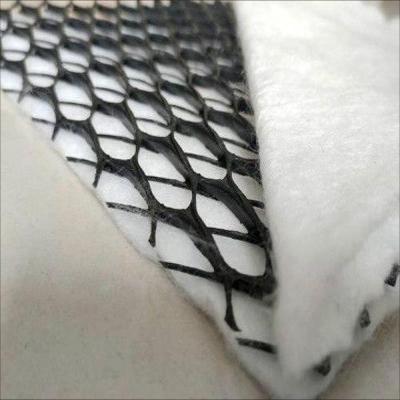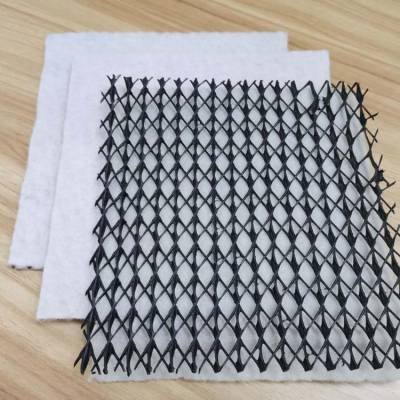In road engineering, the design and implementation of drainage system is one of the key factors to ensure the stability of road structure and prolong the service life. Composite drainage network It is an efficient and durable geosynthetic material and is commonly used in road engineering. So what are its specific applications in road engineering?

1. Advantages of composite drainage network
The composite drainage net is composed of three-dimensional plastic net bonded with water-permeable geotextile on both sides, and has a unique three-dimensional drainage structure.
1、High drainage performance: The composite drainage network can quickly guide groundwater or rainwater to the drainage system, prevent water from accumulating in the roadbed, and avoid problems such as subgrade settlement and cracks.
2、High compressive strength: The composite drainage net can withstand large loads, is not easy to deform, and can maintain stable drainage performance even in the case of frequent vehicle rolling.
3、Corrosion resistance and aging resistance: The composite drainage net is made of high-quality materials, has very good corrosion resistance and aging resistance, and can be used for a long time in various harsh environments.
4、Easy construction: The composite drainage net is light in weight and flexible, making it easy to transport and construct. Its unique structure allows it to fit closely with subgrade materials and improve the drainage effect.
2. Specific application in road engineering
1、Subgrade drainage
In subgrade engineering, composite drainage network is generally laid at the bottom or middle layer of subgrade. It is capable of draining groundwater from the subgrade and preventing moisture from eroding and softening the subgrade material. It can also block the rise of capillary water, reduce the water evaporation on the subgrade surface, and can keep the subgrade dry and stable.
2、Pavement drainage
In pavement structures, composite drainage nets can also be used. Especially in some rainy areas or road projects with high drainage requirements, laying the composite drainage net under the pavement base can quickly discharge pavement water seepage and rainwater, prevent water from accumulating in the pavement structure, and reduce the occurrence of pavement cracks and potholes.
3、Slope protection
In slope protection projects, composite drainage nets can also be used. It can quickly guide the rainwater on the slope to the drainage system to prevent the slope from instability caused by rainwater erosion. It can also enhance the stability of the slope soil and improve the anti-sliding ability of the slope.

3. Construction precautions
1、Material selection: Choose composite drainage net products with reliable quality and stable performance to ensure drainage effect and service life.
2、Laying method: The composite drainage net should be laid smoothly and tightly under the subgrade or pavement base to avoid wrinkles or gaps. Also make sure that the drainage net is smoothly connected to the drainage system so that the water can drain smoothly.
3、Protective measures: During the construction process, attention should be paid to protecting the composite drainage network from mechanical damage and chemical corrosion. Especially during the laying process, it is necessary to avoid sharp objects scratching the surface of the drainage net.
4、Quality inspection: After the construction is completed, the quality inspection of the composite drainage network should be carried out to ensure that its drainage performance and service life meet the requirements.
From the above, it can be seen that the application of composite drainage network in road engineering has significant advantages and wide application prospects. Through reasonable selection and use of composite drainage network, the drainage performance, stability and service life of road engineering can be improved.
Post time: Apr-11-2025



